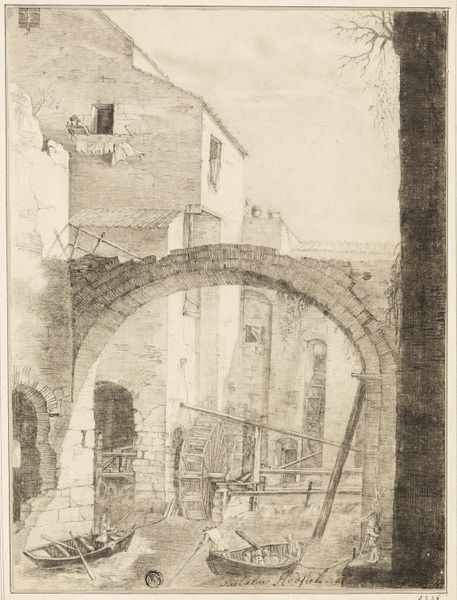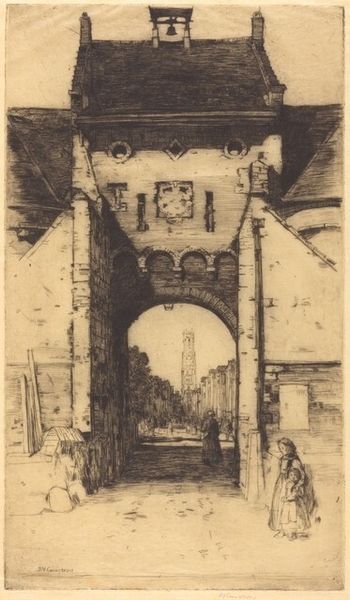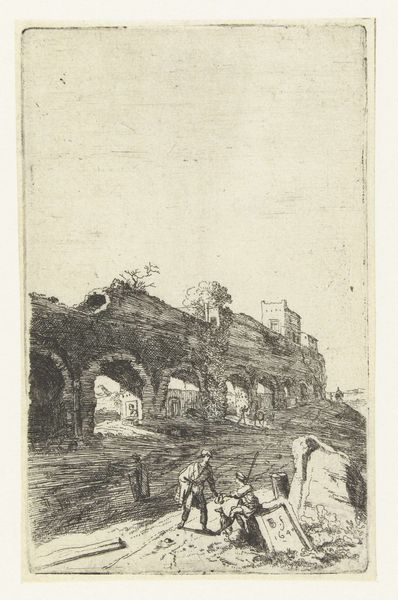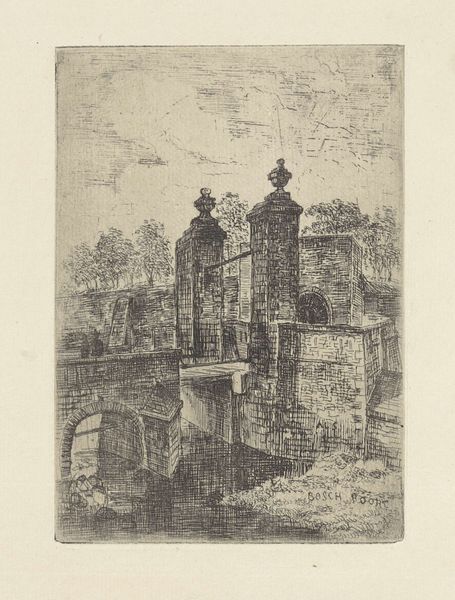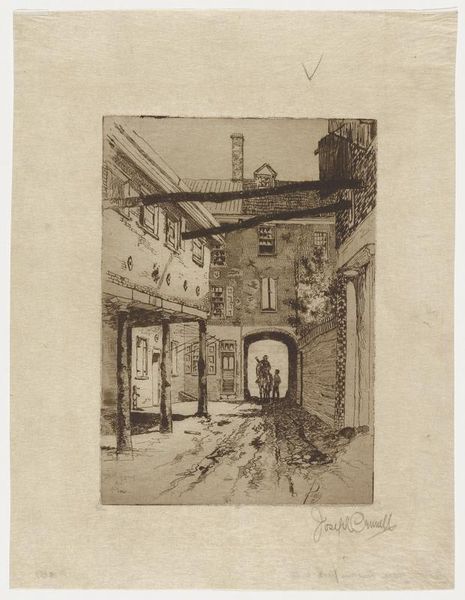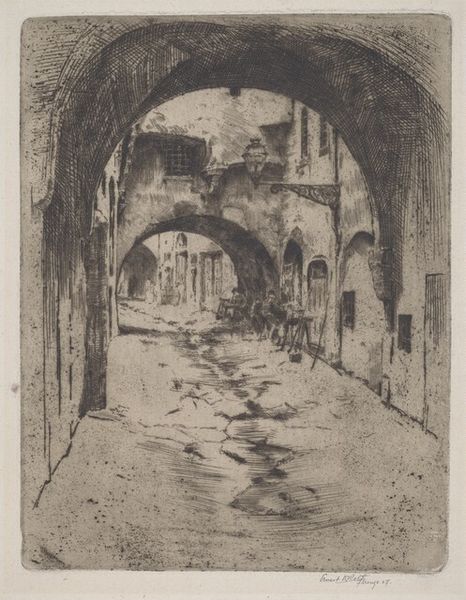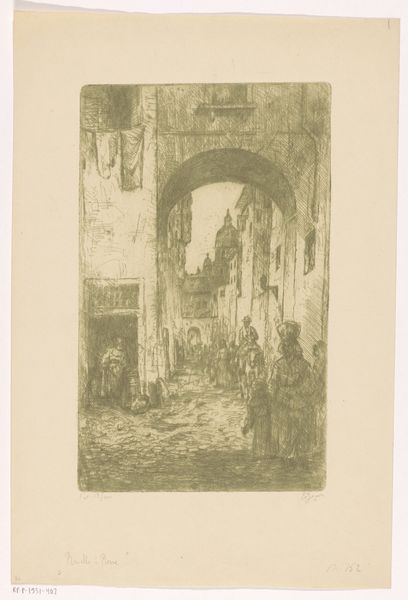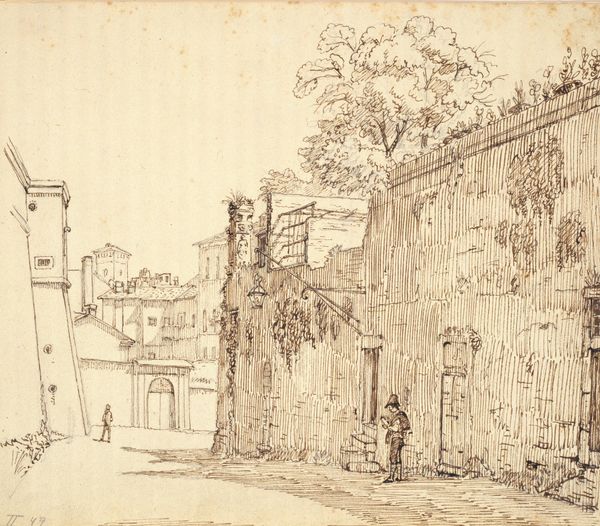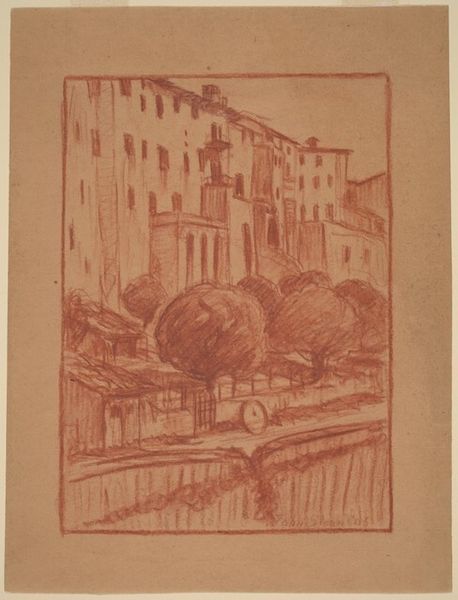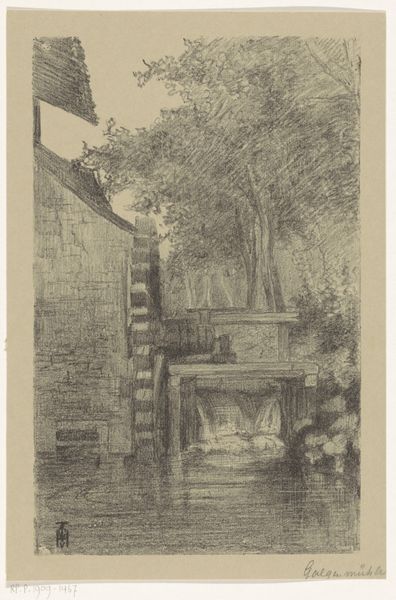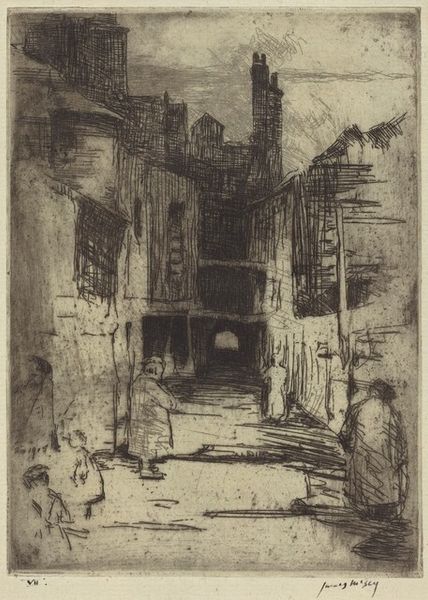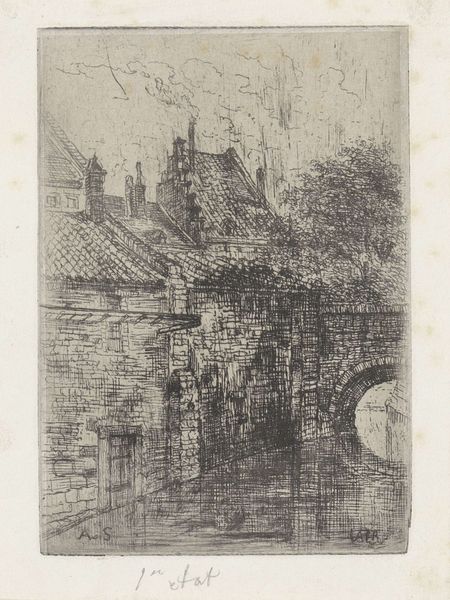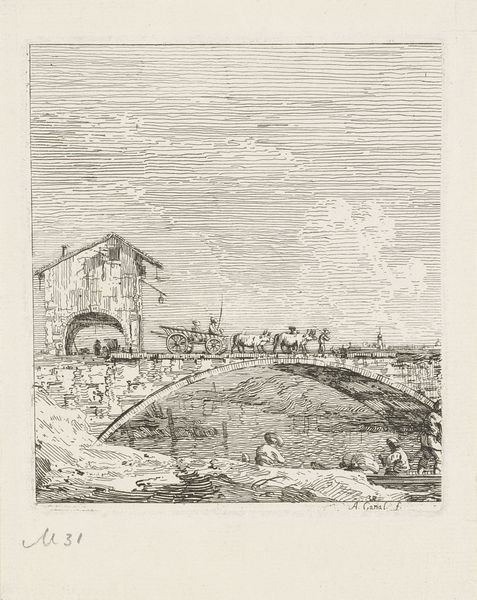
print, etching
# print
#
etching
#
landscape
#
etching
Dimensions: 13 3/4 x 9 7/8 in. (34.93 x 25.08 cm) (plate)17 5/8 x 13 5/16 in. (44.77 x 33.81 cm) (sheet)
Copyright: No Copyright - United States
Curator: Examining Pennell's 1883 etching, "Porto Romano," what captures your attention first about its rendering in this medium? Editor: Well, the print really emphasizes texture. I'm struck by how the etching captures the cobbled streets and the weathered buildings, everything feels very tactile. How does this emphasis on materiality relate to the content? Curator: It’s critical. The grit, the lines, the sheer labor involved in the etching process mirrors the everyday life and built environment it depicts. Consider how etching allows for mass production, bringing images like this to a wider audience – How does that democratisation of art through printmaking influence how we see the depicted subject, in this case, Rome? Editor: I guess, it changes things because it brings what used to be available to the few, to be shared more widely. Curator: Exactly. Also, observe the subtle tonal gradations achieved through the etching process. This suggests not just observation, but also Pennell’s understanding of the socio-economic conditions imprinted on the city itself. The buildings are aged, worn; made, remade. Editor: It’s like the printmaking mirrors how places accumulate history. What did people at the time make of these depictions? Curator: Remember, the late 19th century witnessed burgeoning industrialization and urbanization. Pennell’s work offers not just an aesthetic view, but a material testament to a specific moment of production and social experience. Are you thinking the print acts like an artefact of a social moment? Editor: Absolutely, the process and the image are intertwined, each informing the other about life at the time. It really makes you consider the physical act of making art and its relation to what is represented. Curator: Precisely. We moved away from the idea of "Porto Romano" being beautiful, or successful as an image. Instead, we talked about the means of production. This kind of analysis enriches the layers through which we understand the work, right? Editor: Definitely! Thanks for making me think about it this way. I feel like I understand the image on a deeper level now.
Comments
No comments
Be the first to comment and join the conversation on the ultimate creative platform.
